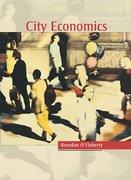6. Everyone lives on an island where accidents are the only external cost of drivingpollution and congestion
Question:
6. Everyone lives on an island where accidents are the only external cost of driving—pollution and congestion don’t occur. The drivers on this island are not very proficient; sometimes they hit another motor vehicle and sometimes they don’t. For an individual driver on a particular trip, the probability of an accident depends on the ratio of the number of drivers x to the number of lane-miles c on the island. The more likely you are to find another driver on a randomly chosen piece of road, the more likely you are to have an accident. Specifically, the probability that a particular driver will have an accident is 0.5(x/c).
If an accident occurs, each driver suffers physical damage of 500; total damage in an accident is 1,000. Every accident involves precisely two cars, both of them being driven.
The only decision drivers make that affects whether they have an accident is whether they make a trip at all. Cars have only one speed, and drivers are all nearly blind. All trips cover the same distance.
Drivers differ in the benefit they derive from making a trip. On any given day, the number of drivers who derive a benefit of at least B from making a trip is 1,000 − 10B, which is essentially an inverse demand curve for trips. Driving has no private costs except those connected with accidents.
Questions 113
a. Suppose laissez-faire without courts prevails. Each driver is responsible only for the private harm she suffers. There are 100 lane-miles of road.
Find the equilibrium number of trips. (Hint: Let x denote the number of trips. Find the expected accident cost of a trip as a function of x. Plug in the inverse demand curve to find how many trips will be taken if that is the cost of a trip. Equilibrium requires that the x be the number of trips people want to take.)
b. What’s the individual expected accident cost of a trip if x trips are being taken?What’s the aggregate accident cost as a function of x? (Hint: Multiply this answer by the number of trips.) What’s the marginal social cost of a trip? (That is, the derivative of total cost with respect to x.) Find the optimal pay-at-the-pump insurance cost per trip. (Hint: Subtract private cost from marginal social cost.)
c. Show that double-strict liability is equivalent to the optimal pay-at-thepump insurance cost per trip.
d. Suppose that no lane-miles are currently built, and the government knows the number of trips x that are going to be made every day. Once a lane-mile is built, capital cost will amount to 2.5 per day for it. So total cost consists of construction (capital) costs and accident costs. As a function of x, what number of lane-miles minimizes total cost?
e. For any capacity
c, suppose the government institutes double-strict liability, with the excess revenue going to the government. That is, when there’s an accident, nobody gets reimbursed anything and each party pays 500 to the government. Find the equilibrium amount of driving x.
f. Find the optimal capacity. (Hint: Values for x and c have to satisfy both the condition in d and the condition in e.) At this capacity, how much revenue does the government collect? What are the government’s costs for constructing the lane-miles?
g. Does the government make money, lose money, or break even? How does this result relate to optimal capacity?
Step by Step Answer:







